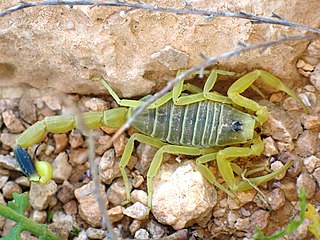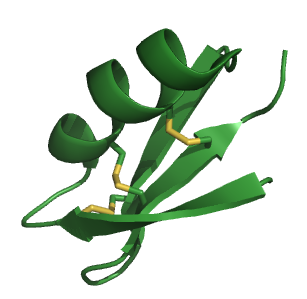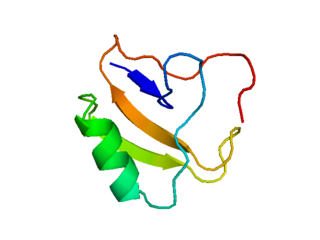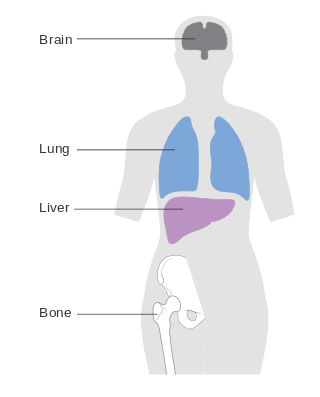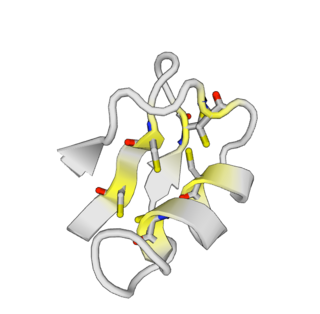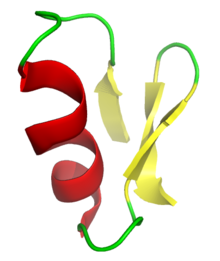 | |
| Names | |
|---|---|
| IUPAC name L-methionyl-L-cysteinyl-L-methionyl-L-prolyl-L-cysteinyl-L-phenylalanyl-L-threonyl-L-threonyl-L-.alpha.-aspartyl-L-histidyl-L-glutaminyl-L-methionyl-L-alanyl-L-arginyl-L-lysyl-L-cysteinyl-L-α-aspartyl-L-α-aspartyl-L-cysteinyl-L-cysteinylglycylglycyl-L-lysylglycyl-L-arginylglycyl-L-lysyl-L-cysteinyl-L-tyrosylglycyl-L-prolyl-L-glutaminyl-L-cysteinyl-L-leucyl-L-cysteinyl-L-argininamide, cyclic (219),(528),(1633),(2035)-tetrakis(disulfide) | |
| Other names MCMPCFTTDHQMARKCDDCCGGKGRGKCYGPQCLCR | |
| Identifiers | |
3D model (JSmol) | |
| ChemSpider | |
PubChem CID | |
| UNII | |
CompTox Dashboard (EPA) | |
| |
| |
| Properties | |
| C158H249N53O47S11 | |
| Molar mass | 3995.71 g·mol−1 |
Except where otherwise noted, data are given for materials in their standard state (at 25 °C [77 °F], 100 kPa). | |
Chlorotoxin is a 36-amino acid peptide found in the venom of the deathstalker scorpion (Leiurus quinquestriatus) which blocks small-conductance chloride channels. [2] The fact that chlorotoxin binds preferentially to glioma cells has allowed the development of methods for the treatment and diagnosis of several types of cancer. [3]

